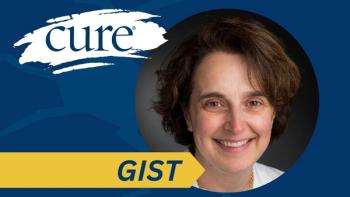
Rapid Evolution in Melanoma Treatment Landscape Over Past Decade Has Significantly Benefitted Patients, Expert Says
Patients with melanoma are living longer than ever before and some, according to an expert from the Rutgers Cancer Institute of New Jersey, are even getting cured or achieving long-term remissions thanks to developments in the treatment landscape.
Over the past decade, countless therapies have been developed and approved by the Food and Drug Administration (FDA) for the treatment of melanoma.
That progress has led to an evolution in the melanoma treatment landscape, which, according to Dr. Roman Groisberg, has provided patients with longer lifespans and more long-term remissions after diagnosis.
However, as Groisberg, a medical oncologist at Rutgers Cancer Institute of New Jersey, said during a recent presentation at the CURE® Educated Patient® Skin Cancer Summit, not all those results are infinite, and more research is needed.
Melanoma 101
Although there are more than 3.5 million cases of skin cancer diagnosed each year, Groisberg noted how melanoma only accounts for approximately 5% of those cases. Of note, however, melanoma causes more than 75% of skin cancer-related deaths.
“Obviously, this is an important disease to discuss,” Groisberg noted during the beginning of his presentation.
What’s interesting to note about melanoma, he said, is how the incidence of the disease is rising. In fact, he cited data from the CDC that shows that melanoma cases have doubled between 1982 and 2011. And unfortunately, many of these patients are often young and otherwise considered healthy. As a result, he highlighted, newer and important therapies are always needed.
The ABCDEs of Melanoma
Groisberg also stressed that a melanoma doesn’t quite look the same. For instance, he suggested that people follow the traditional ABCDEs of diagnosis: asymmetry, borders, colors, diameter and evolution.
Often, a melanoma is asymmetric and fails to resemble what would be considered a regular mole, he said. Moreover, a melanoma is going to have irregular borders, display a variety of colors and be larger in diameter. Most importantly, he explained, is the evolution of the perceived mole. Groisberg highlighted how most moles have the same appearance for many years, but if a change is noticed, then that individual should consult with a physician.
Adjuvant Therapy
Patients diagnosed with melanoma are either diagnosed with stage 1, 2 or 3 disease. Usually, Groisberg mentioned, patients with stage 1 and stage 2 melanoma are effectively treated with just surgery. However, many patients with stage 3 disease require adjuvant treatment after their surgery.
“The idea is to give some therapy that is going to reduce the risk of the cancer coming back after there's been a complete surgical removal,” he said.
There are, as Groisberg pointed out, several drugs approved in the adjuvant (after surgery) setting for patients with melanoma. The first of which, he noted, was
Of note, this combination is only approved for patients with BRAF-positive stage 3 melanoma, which Groisberg noted approximately half of melanoma cases carry this mutation.
Other therapeutic options in the adjuvant setting include Yervoy (ipilimumab), Opdivo (nivolumab) and Keytruda (pembrolizumab).
Theoretically, he mentioned, all patients with stage 3 melanoma could receive Yervoy. However, almost no one is receiving that any longer since Keytruda and Opdivo have been associated with more effective and less toxic results, according to Groisberg.
“These are now the preferred agents for really any patient with melanoma, but especially for those without a BRAF mutation,” he said. “And both these agents are improving the adjuvant therapy.”
Treatments for Metastatic Melanoma
Patients with metastatic disease — meaning the cancer has spread from its original site to another organ such as the lungs, liver or brain — often achieve the best responses with BRAF-targeting agents
Other therapies such as Keytruda and Opdivo are associated with approximately 45% to 50% overall response rates in these patients, Groisberg noted.
And although several therapies in the metastatic space are associated with encouraging overall response rates, not all the results are infinite.
“As all things in life, things don't last forever,” he said.
Many of the median progression-free survival (average time patient stays on therapy before disease begins to grow) rates associated with approved treatments for metastatic melanoma range between approximately three to 15 months, according to Groisberg. Moreover, treatment with those same therapies has been shown to induce median overall survival (average time a patient is alive after a particular treatment) rates of approximately 10 months to five years.
“These numbers are actually quite long and extending as we get better at using these agents and (have) more experience with them,” he said. “I do have to tell you, though, that there is no such thing as a free lunch. Because not all these therapies are equivalent in terms of side effects.”
Looking Ahead
There are several novel immunotherapies that are in development to activate the immune system in different ways, Groisberg mentioned. There are also therapies including LAG-3 checkpoints, pegylated-IL2 or oncolytic viruses and combinations of BRAF inhibitors with immunotherapies.
“The landscape of melanoma treatment has evolved rapidly over the past decade,” he concluded. “Patients are living longer after (a) melanoma diagnosis and some are even getting cured or achieving long-term remissions, even with metastatic disease, so I encourage everybody to stay tuned (and) stay educated.”
For more news on cancer updates, research and education, don’t forget to




